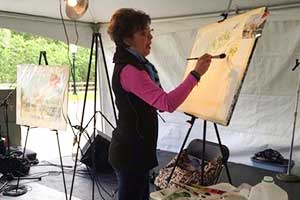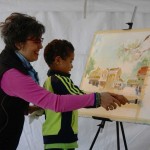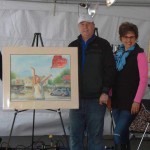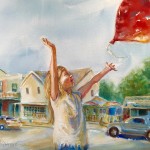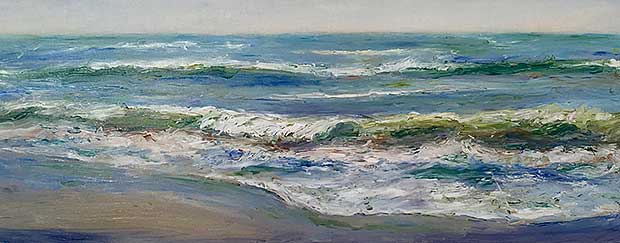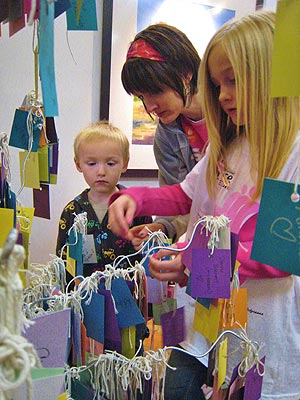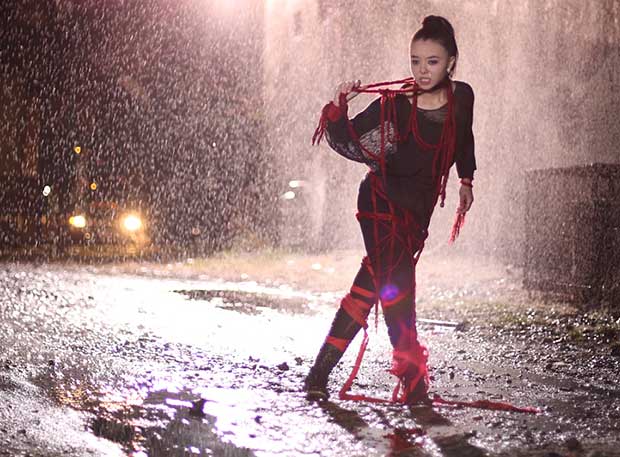Color Me Orange—Color Me Kind: School Bullying
After the suicide of Zoe Johnson, a West Michigan thirteen year old, a fellow student wrote on the victim’s Facebook page: “Good ur gone.”
I don’t know all the details involved. But after listening to the news report on bullying, I felt compassion for Zoe’s mother and what must be her complete devastation by her daughter’s death and the tragic outcome, in this case, of school bullying.
Color Me Orange—Color Me Kind shines a spotlight on bullying. The installation is specifically tailored for middle school students—often the most vulnerable. Some students like Zoe suffer so intensely from bullying that they believe that suicide is the way to end it all.
The Artwork
Color Me Orange—Color Me Kind is a 16 x 4 x 6-foot wooden structure enclosed by orange mesh walls. The work also supports an eight-foot focal art piece, weighing approximately 140 pounds, which shows Koi fish struggling to swim upstream; this struggle represents our challenging relationships.
The two top layers of the artwork are made up of painted Plexiglas fish and splashes. The placement of these fish and splashes creates a sense of energy and tension. The following side view shows the multi-layer artwork.
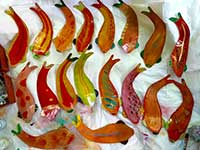
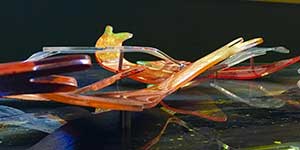
The Plexiglas panel located below the fish represents the river water. The following photos show the back side of the Plexiglas panel that is painted with several layers of acrylic paint. From the front view, each layer creates texture and the sense of depth. Some of the current has been left unpainted to give a glimpse of the riverbed. This multi-layered art piece rests on an eight-foot stainless steel base etched with current marks that portrays river bottom movement.
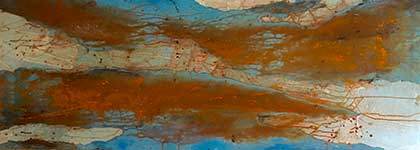
Plexi panel (back view): Layer one
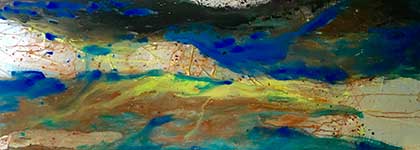
Plexi panel (back view): Layer two
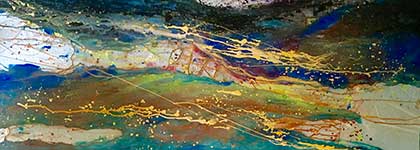
Plexi panel (back view): Layer three
Viewing the artwork from the front, visitors can see through the splashes and river current, enhancing a multi-dimension visual experience. The installation is situated next to the pond and waterfalls of the Ford Presidential Museum, giving water sounds, and, if the wind is just right, the spray of water.
Interactive Healing Installation
Fifty thousand orange ribbons have been prepared for visitors to interact with the work. As ArtPrize viewers tie orange ribbons on the canvas, the see-through orange mesh fencing will become opaque with color. Thus, as a community, we will be symbolically coloring with kindness.
By choosing to be deliberately kind, our actions have the potential to brighten someone’s world.
Maybe kindness, love, and understanding would have helped Zoe’s school situation and resulted in a different outcome. Life-affirming creativity that invites reflection and flourishing can heal.
Color Me Orange—Color Me Kind
Coloring with Kindness
Gerald R. Ford Presidential Museum
September 21 to October 9, 2016
Vote 62626
(Located outside on the museum plaza)
Tell Us Your Story. #ColorMeKind

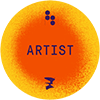
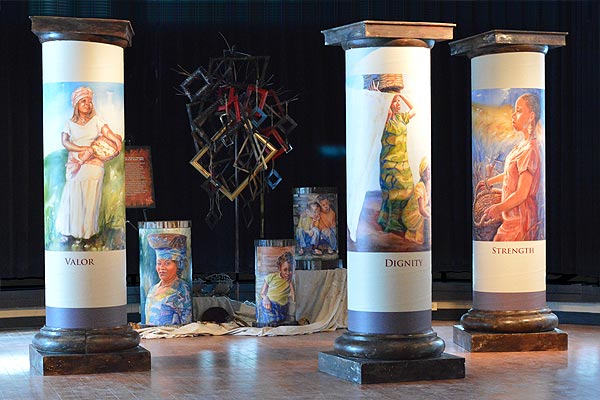
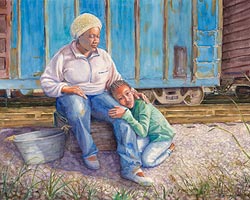 From ArtPrize 2014 to several solo shows including the last exhibit at Michigan State University, Courage Ablaze acted as a catalyst to open hearts. Though the work told the stories of Congolese women half a world away, several American visitors confided their own rape stories. Courage Ablaze facilitated small steps towards healing as individuals shared their pain. I’m grateful for the opportunities to touch so many visitors with the untold story of DRC Congo.
From ArtPrize 2014 to several solo shows including the last exhibit at Michigan State University, Courage Ablaze acted as a catalyst to open hearts. Though the work told the stories of Congolese women half a world away, several American visitors confided their own rape stories. Courage Ablaze facilitated small steps towards healing as individuals shared their pain. I’m grateful for the opportunities to touch so many visitors with the untold story of DRC Congo. I would like to acknowledge the Congolese leaders who kindly supported Courage Ablaze throughout the last few years. Kizombo Kalumbula, a naturalized Congolese pastor and director of
I would like to acknowledge the Congolese leaders who kindly supported Courage Ablaze throughout the last few years. Kizombo Kalumbula, a naturalized Congolese pastor and director of 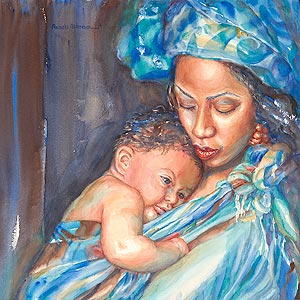 In June, Courage Ablaze joined the permanent collection at Bethany Refugee and Immigration Services where the art will continue to tell the story of the women and children of DRC Congo. Bethany has the resources to reach beyond my influence, as a culture care artist, for the Congolese people.
In June, Courage Ablaze joined the permanent collection at Bethany Refugee and Immigration Services where the art will continue to tell the story of the women and children of DRC Congo. Bethany has the resources to reach beyond my influence, as a culture care artist, for the Congolese people.
